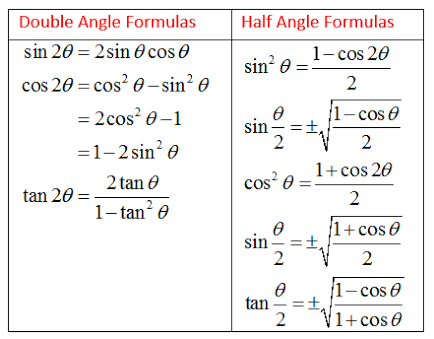x^0 (x to the power 0)
1
cos(0), sin(0)
1, 0
How is lim (t -> 0) different than lim (t -> 0+) and lim (t -> 0-)
One is the limit from both directions, one is from the right, and one is from the left
derivative of a*x^n where a, n are constants that are not 0
a*n*x^(n-1)
The natural log of 1
0
cos(pi/3), sin(pi/3), tan(pi/4)
1/2, sqrt(3)/2, 1
lim (3x^2 + 2x + 4) / (2x^2 + 7x - 8) as (x -> infinity)
3/2
Derivative of 2^x
2^x (ln 2)
The highest exponent of a polynomial function
The order
Identity relating sin, cos, 1
sin^2 + cos^2 = 1
lim te^(-t) as t -> infinity
0
Derivative of e^(3x^2+8)
(6x)e^(3x^2+8)
e^ln x (e to the power of natural log of x)
x
Half / double angle formula (any of them)

What is the lim (n -> infinity) of nth root of n (n^(1/n))
1
Derivative of tan
sec^2
When the numerator of a rational function has a smaller order than the denominator, the function is ____
Proper
The range of the function inverse tangent
(-pi/2, pi/2)
When are you 'allowed' to use L'Hopital's rule?
When the limit is in the form infinity / infinity or 0 / 0
Derivative of csc (cosecant)
-csc cot